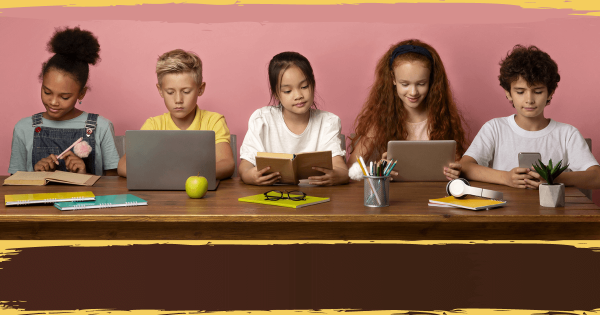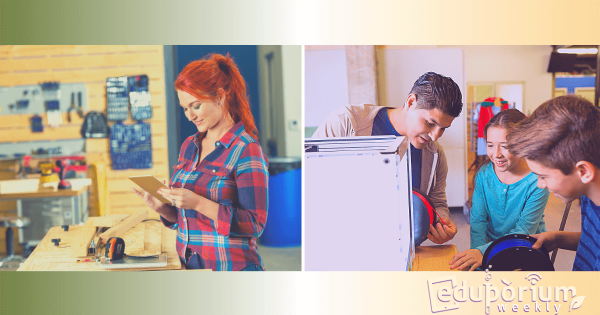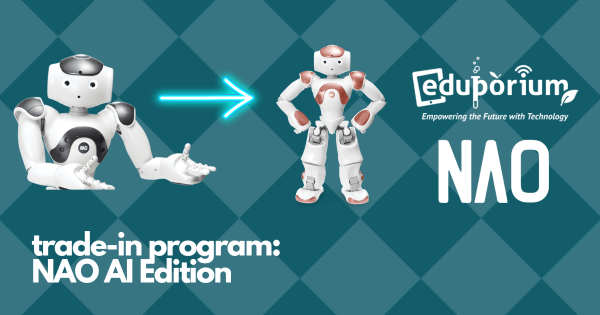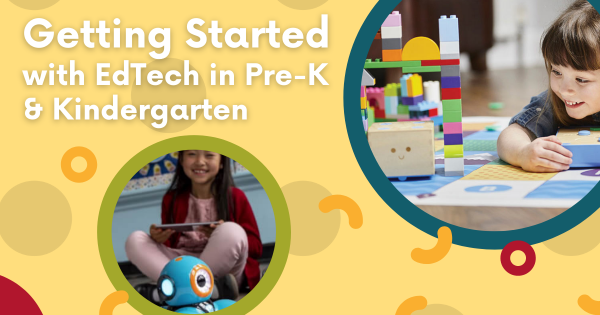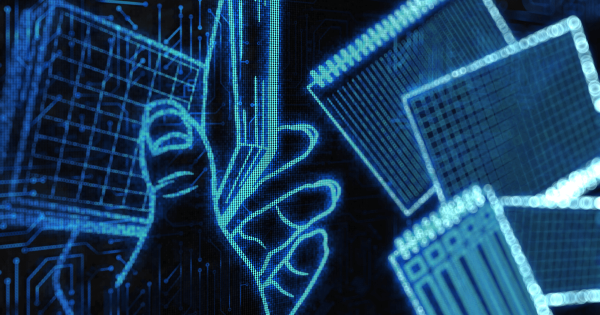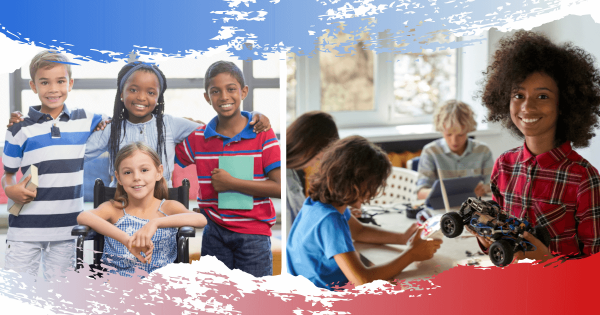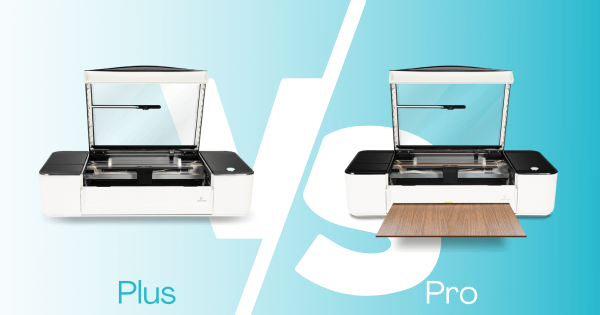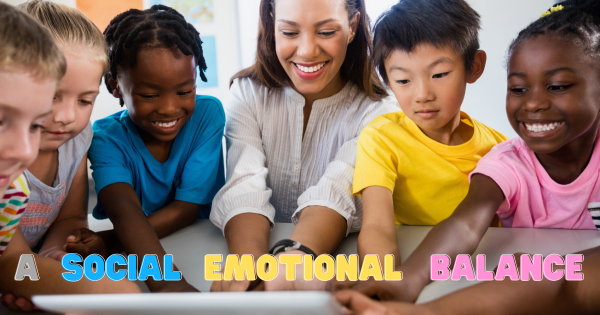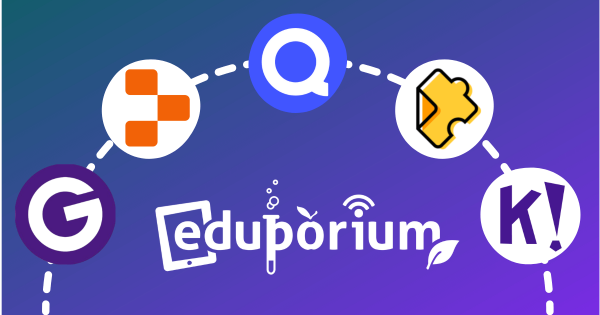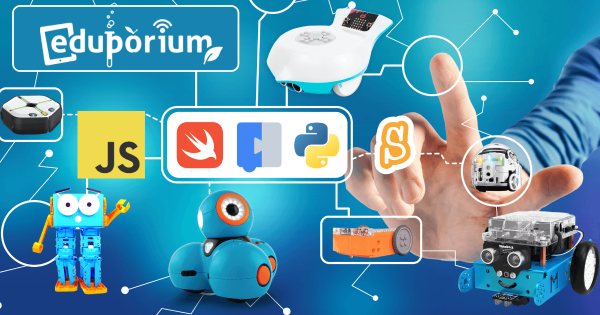With information and communications technology (ICT) generally regarded as one of the top sectors across the current workforce, the need for digital literacy proficiencies are now much more urgent across education and that starts with improving digital inclusion and equity in every classroom. We all can help slim the digital divide so digital inclusion is a right not a privilege.
News & Updates
In the News & Updates section of our blog, you'll find updates on many of the latest STEM developments. These include happenings from the STEM and MakerEd worlds as well as important Eduporium announcements. This is where we'll share updates on product additions, announce the recipients of our monthly educational technology grant, pass on company news, highlight upcoming events, and discuss a whole lot more when it comes to cool topics in STEM education. Beyond our STEAM coverage, we also touch on various elements of 21st century learning. These include remote instruction, special education, social-emotional learning, and equity and diversity. If it's happening in the world of education, we're interested. And, we'll offer our analysis on what's affecting students, teachers, and administrators, attaching our genuine thoughts to keep you updated.
This is an area for us to keep a repository of recent happenings. Whether it's the release of a new type of technology, any additions to an EdTech product line, the arrival of new brands to our store, or some thoughts on the current state of education, there's a good chance you'll find it here. As time has gone on, we've participated in more STEAM and makerspace events. So, we've started to keep curated collections of those experiences. You can find them all throughout the News & Updates category. As Eduporium continues to expand and we get to participate in more STEM education projects with educators in some of the country's biggest school districts, we'll share those stories, too. We hope our collective accomplishments and partnerships with members of the K–12 community inspire others to innovate in new ways!
-
Building Your School Makerspace Doesn't Have To Be Hard
Each school makerspace is different but, if you’re looking to add hands-on maker tools to yours, we offer a huge variety for K–12 STEAM learning. For this list, we’ve highlighted lots of our most in-demand offerings—from low-tech starter materials to high-end MakerEd machinery. Whether you would rather start small or make your space robust, they work in any situation. -
Trading In An Older NAO Robot For The NAO AI Version
After its impressive streak as the most advanced humanoid from Softbank Robotics, the NAO V6 has a successor. Still pretty new to the STEM scene, the NAO V6 AI Edition is packed with amazing features and new modes for your students to explore. Whether using the presenter mode, conversation mode, or coding in C++, C#, Python, or Java, it’s perfect -
8 Early Education Technology Tools: STEM In Kindergarten
There are actually a lot of awesome early education technologies students could use for practicing everything from problem solving or engineering to math or even coding in Pre-K or kindergarten. Whether it is engaging them more successfully or actually introducing hands-on experiences, including coding, the right tech has a place in ECE and these are some favorites. -
Guest Blog: Writing & Plagiarism With ChatGPT
With AI tools like ChatGPT expanding in popularity, many teachers are now worried about their potential use as a plagiarism tool. One educator who is keeping an eye on that very issue is Daniel Sabol, a teacher and a librarian who’s passionate about teaching all students to properly use and cite their sources. Here’s his tips for detecting plagiarism with -
Striving For Equality And Starting With Equity In Education
Whether it is recovering from remote learning setbacks, addressing gaps in technology access, or focusing on SEL recovery, things got really tough on many students. Plus, since not all students in all geographical areas and of all socioeconomic backgrounds have access to all the same opportunities, it’s easy to understand that certain achievement gaps will persist. -
Glowforge Plus Or Pro? Which 3D Laser Printer Is Best For STEM?
The Glowforge Pro is the more capable Glowforge printer and, as such, its price tag is higher. Of course, your students can do more with a Glowforge Pro, including using its Pro Passthrough technology, which allows them to create larger prints out of infinitely long materials. If they want to start with simpler Glowforge projects, however, the Glowforge Plus might -
Helping Children Achieve Social-Emotional Balance In Learning
Students have dealt with a slew of varying emotions and all-new stressors since learning went remote amid the pandemic and plenty are still working back from that. Infusing MakerEd tools into new types of instruction is one solution that could help children restore some of that emotional balance so they can keep learning, express ideas, and share feelings comfortably. -
Top Supplementary Websites For The Classroom
As education evolves, so do the methods of enriching students’ classroom experiences. For example, gamifying learning can help boost engagement, coding prepares students for the future, and multimedia tools help enliven instruction. Plus, they all challenge kids to apply what they’ve learned. So, we compiled the best supplementary websites for your teaching toolbox. -
Robotics Tools For Teaching Kids Different Coding Languages
Robotics tools, in particular, are very valuable in K–12 classrooms because of the various sets of skills children can gain when coding with them. Most notably, teachers could introduce a variety of programming languages, like Scratch, Blockly, JavaScript, Swift, Python, and others—helping kids build a foundation for both their creative and technological development.




